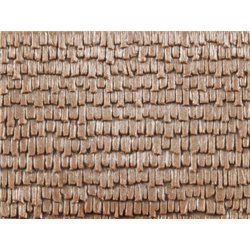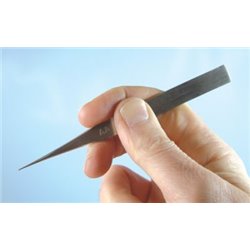Static grass puffer bottles work by manually charging model grass fibres with static electricity. When the charged...
No products
Product successfully added to your shopping cart
There are 0 items in your cart. There is 1 item in your cart.
Search Tips
How can I easily make a shingle or asphalt roof for a building?
Outbuildings come in a variety of roofing styles and many can be modelled quite easily and cheaply with materials that might be readily at hand. Many modellers scratch-build buildings for a layout or diorama, or wish to add a little more texture to a card-based kit. Inevitably, when first viewed most layouts or dioramas are seen from above and so the roofs of any buildings are one of the most obvious features.
Used sandpaper can be very effective at mimicking asphalt or shingle-tiled roofs. Used sandpaper is robust yet flexible. It can be cut into a sheet to represent an asphalt roof or can be cut into individual tiles to represent roof tiles in O or OO/HO gauge. Likewise, it can be gently folded with tweezers or a ruler to form ridge tiles. It can then be given a light coat of a suitable shade of acrylic or enamel paint so that it mimics not only the texture but also the colour of the roof cover in question.
Click here to receive the tips weekly in your mailbox. You can unsubscribe at any time.










